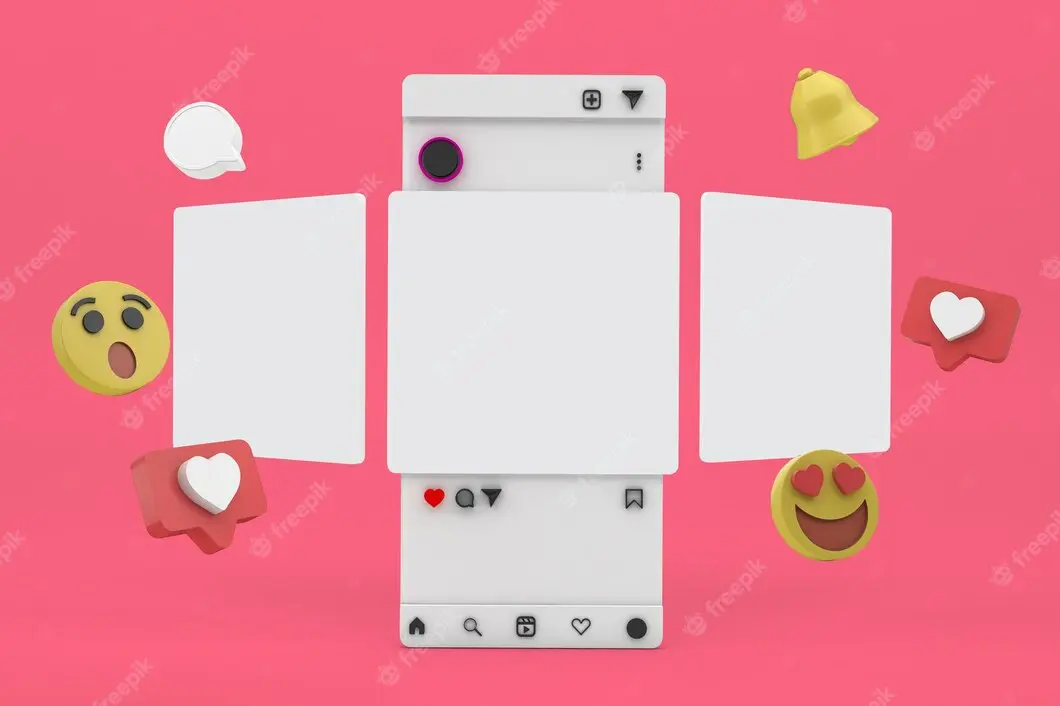A corporate logo is an essential component of a brand's identity. It announces the company to the world, imprints itself on its memory, and guarantees quality. It's hard to imagine even a small company without such an element.
If you are looking for specialists to create logo for a company in Tashkent, Then read on to learn more about how you can do it yourself or with the help of professionals.
What is a logo?
Logo A logo is a small, signature graphic created to distinguish a company from its competitors. Logos are sometimes called emblems or trademarks. A logo is undoubtedly an integral part of a company's corporate identity and deserves special attention. A company logo should not only be memorable and distinguishable from competitors, but also have character. It should embody the company's values, ideas, and aspirations. If a logo were a person working in a team, it could certainly be called a symbol of the team. For business, a graphic is also partly alive and can be updated over time.
The history of the logo
Stories about the origins of logos sometimes begin with ancient times, when primitive people depicted everything they saw on cave walls: animals, people, and hunting. Cave paintings are considered the birthplace of visual perception. The discovery of writings is also no coincidence in the history of logos. The creation of a visual image with a name on a plaque was also associated with a particular place or person.
A person receives approximately 90% of information through their eyes, that is, through visualization of the world around them. Accordingly, an emblem is the visualization that consumers remember and associate with a brand.
The origin of the brand is also considered part of the history of emblems. In ancient, medieval, and later centuries, brands not only allowed people to express themselves but also to mark their territory. For example, minting coins with the image of a ruler glorified the ruler, while special symbols were burned into the bodies of cattle and slaves to denote their ownership. Symbolism evolved and entered the world with new colors, original stories, and unique images.
Heraldry can be attributed to the visual component of each country, order, clan.
The term "logo" appeared in the 19th century and was designated by a combination of two to three characters of a typographic font.
The first officially registered logo is considered to be a graphic design from 1876 for Bass beer (Bass & Co). At the time, the beer was popular in Britain and still exists today. The logo was registered by William Bass, the owner of Bass & Co.
Ten years later, in 1886, the logo for the world-famous soda Coca-Cola appeared. The name and logo were created by an accountant named Frank Robinson, who worked for John Pemberton (the founder of Coca-Cola).
The story behind the appearance of a musical instrument on the label of Irish beer Guinness is fascinating. The label depicts a harp. Guinness registered the national symbol of Ireland as a trademark in 1876. Because of this nuance, the harp depicted on the euro coins had to be reversed.
Another interesting story involves Adobe. We're all familiar with products like Adobe Photoshop and Adobe Illustrator. The logo was created by the wife of one of the founders. The letter "A" inscribed in a rectangle is a stylized "A" and a triangle.
Hyundai's iconic image is of people shaking hands in the shape of an "H." This symbol represents the relationship between the organization and its customers.
The brilliant minds of Salvador Dali, the creator of the world-famous flower for one of the sweetest brands, Chupa Chups, spend about an hour creating a logo. However, this is rather the exception to the rule, when a hastily created image becomes so popular.
These are just a few examples of how symbols were created, changed over time, and survived in their modern interpretations. It's extremely rare to find a brand that hasn't changed its identity or rebranded its logo, among other things.
Logo functions
Many people don't think about the functions of a logo. It sounds a bit unusual, as it might seem like a simple drawing of an object or creature with some text. But no! It's not that simple. A graphic image has its own functions:
- Distinctive. As mentioned above, the image should stand out from the competition and be associated with a specific company. For example, when you hear the word "Starbucks," you might immediately think of a mermaid on a colorful, round background. A logo is about individuality;
- Protective. A custom design protects goods and services, being the property of the company;
- Quality guarantee. A displayed logo is a guarantee of product quality. This means that any user of your products or services will already be assured of the product's quality and will have no doubts.
- Advertising. Creating an image through a logo helps a company become easily recognizable among its audience, and its product/service is easily recognized through its reputation, advertising, and quality.
Uzbek company logos serve a variety of functions that help them enhance their brand and engage with their target audience. Here are some examples of the functions of Uzbek company logos:
Brand Identity: A logo is a key element of brand identity. It visually represents the company and allows consumers to easily recognize it.
Uniqueness: Logos help companies stand out from the competition. They must be unique and memorable to attract customers.
Communicating Values: A good logo can convey a company's values and philosophy. For example, if a company is committed to environmental responsibility, the logo might include elements related to nature.
Establishing Trust: A professionally designed logo can convey a sense of reliability and quality to consumers. This is especially important for companies operating in industries where trust is essential, such as medicine or finance.
Promoting Products and Services: Logos can be used to promote specific products or services of a company. For example, if a company produces a line of home goods, the logo can be tailored to each product.
Associations and emotions: Logos can evoke certain associations and emotions in customers. For example, a logo with bright colors and positive imagery can evoke joy and pleasure.
Global Recognition: If a company plans to export its products or services outside of Uzbekistan, a logo can help improve global recognition and attract international customers.
Examples of Uzbek company logos that perform these functions include those of banks, travel agencies, textile manufacturers, and other industries active in the country and abroad.
Is it possible to create a logo yourself?
Creating a logo for your company in Tashkent requires a thoughtful and deliberate approach, not rushing. It's important to carefully select the colors, shape, contour, and lettering, eliminating anything unnecessary.
While creating such a key symbol can be expensive, it's best to entrust this task to professionals. There are many experienced designers and firms in Tashkent ready to help you create a logo that suits your needs.
At the initial stage, you can create a logo mockup yourself. However, this is rarely done by large companies, while smaller businesses can start with this option. For inspiration, you can browse images online based on your business theme or search for ideas on Pinterest, which has a wealth of art on various topics.
Remember, your logo shouldn't be a copy of another company's design. Therefore, if you want a unique logo, you'll need to create it yourself, learn how to create a layout, and convert it into digital format. If this proves difficult, it's best to consult with a professional to save time and achieve the perfect logo for your company in Tashkent. Below are some tips to help you achieve the perfect result.
6 Tips to Get the Logo You Want
- Collect references. In design, references are previously created artistic images or works that inspire. They act as a kind of approximation of what you'd like to see, but personalized for your own needs. You can find them online, especially on Pinterest.
- Decide on a color(s). As mentioned above, color plays an important role. It should reflect the company's character and align with the brand book—the corporate identity color palette. Color requires special attention, so it's crucial to identify a few colors from which to choose for further work;
- Decide what the graphic design will be. This refers to a lettering or image. Lettering refers to the company name, for example, "Bruce & Co."
-
- If you're choosing a signature, you need to choose a font. The font should be easy to read, so every client can easily read and remember the organization's name.
- If an image is chosen, then it is necessary to determine the shape (circle, square, triangle), what will be depicted inside - a real animal (for example, a bear or a raccoon), a fictitious mythical creature (for example, a unicorn, a mermaid, etc.), perhaps the image will be invented individually (for example, something combined that did not exist before).
- The logo's geometric shape doesn't depend on the text or image. In any case, a shape will need to be chosen. Even if it's a white background without any lines, you need to consider how the logo will be cut out or displayed on other backgrounds;
- Describe your target audience profile. A well-described consumer profile for a specific product allows you to create a suitable one with almost 100% accuracy. It's important to consider your audience's color preferences and age. Not everyone likes a particular color equally, but choosing the right shades will work in your favor. Regarding age, age categories vary. And you should focus on trends and hobbies;
- Fill out the brief. A brief is a kind of questionnaire for the contractor and client, in which they provide the necessary information. The brief includes information about the company (name, type of activity, and other details); a description of the target audience; contact information; a brief description of competitors (advantages, disadvantages, likes and dislikes); materials in the form of corporate identity documents; favorite references; constraints; budget and deadlines.
Logo design shouldn't be entrusted to a novice designer or freelancer. If you want a high-quality logo, fill out a form like this. The completed brief is then submitted to the designer for review. Then comes another round of in-person discussions. Additional details, budget, and deadlines are discussed again.
Conclusion
There are many ways to create a branded logo yourself or with the help of professionals. However, to achieve success, it's essential to devote sufficient time to developing this important brand element. A logo will serve your company for many years, perhaps even centuries, helping you stand out from the competition and establish yourself in the minds of your target audience.
In this context, as in Tashkent, where the business sector is also actively developing, it's best to entrust graphic design to experienced designers. They will help create a logo that will become a reliable ally for your business on its path to success.







